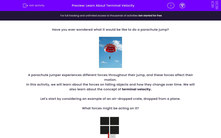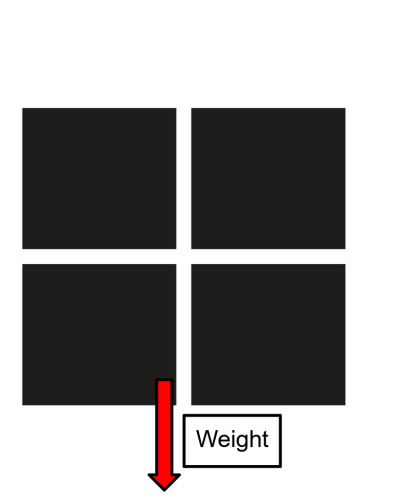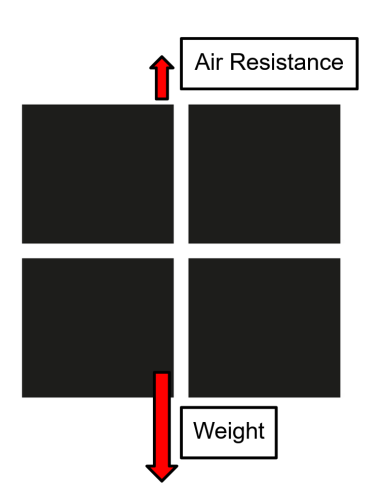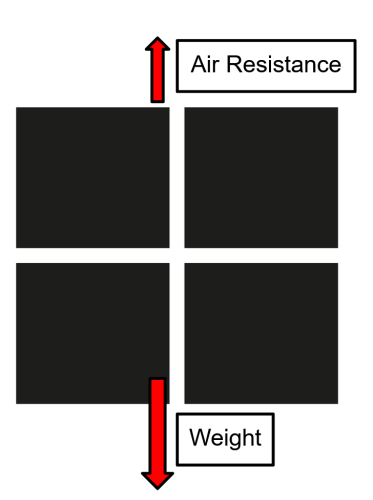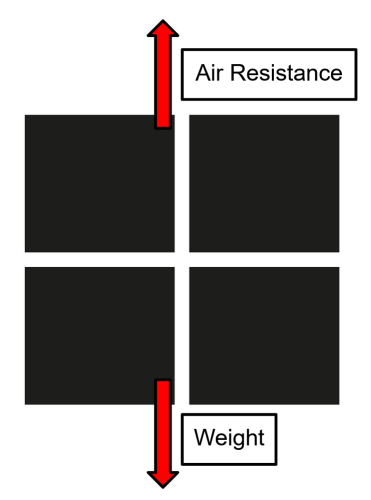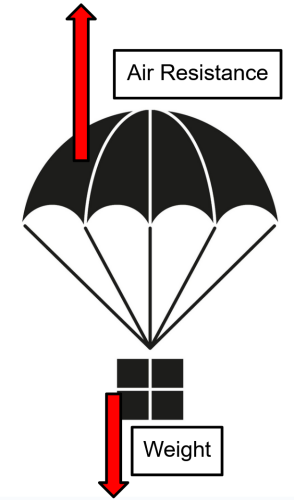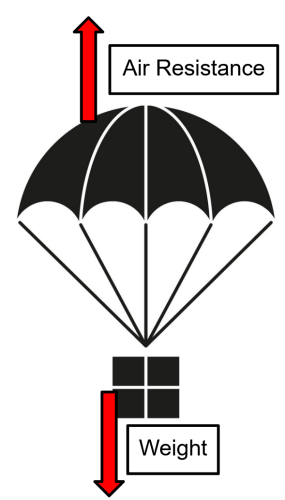Have you ever wondered what it would be like to do a parachute jump?

A parachute jumper experiences different forces throughout their jump, and these forces affect their motion.
In this activity, we will learn about the forces on falling objects and how they change over time. We will also learn about the concept of terminal velocity.
Let's start by considering an example of an air-dropped crate, dropped from a plane.
What forces might be acting on it?
Initially, before the crate falls, it is only experiencing one force - its weight. The weight is acting downwards.
Because the crate is experiencing an unbalanced force, it will accelerate (speed up) in the direction of the ground.
As the crate moves through the air, the crate begins to experience another force.
The crate is experiencing air resistance (also known as drag). Air resistance acts against the motion of an object, so in this case, it acts upwards, opposing the weight.
The air resistance is less than the weight of the crate, so it is still experiencing an unbalanced force downwards, causing the crate to continue accelerating.
As the crate speeds up, the air resistance increases. The greater the speed of an object, the more air resistance it experiences. You can see this in the image above.
The air resistance is still less than the weight of the crate, so it is still experiencing an unbalanced force downwards, causing the crate to continue accelerating. However, the difference between the forces isn't as great as it used to be. That means the unbalanced downward force isn't as big any more.
The crate accelerates, but it is not picking up speed as fast as before.
Eventually, as the crate continues to fall, the air resistance increases until it is the same size as the weight of the crate. The forces are balanced.
When the forces on an object are balanced, its motion will not change. In this case, the crate will keep falling but at a constant speed. The crate won't be able to fall any faster.
For falling objects, we call the maximum constant speed they reach their terminal velocity (velocity is another word for speed, in a specific direction).
Now, a parachute on the crate opens. How will that affect the forces on the crate?
The weight remains the same, but now the air resistance is much greater because the parachute has a large surface area.
The forces on the crate are unbalanced, and this time the overall force acts against the direction of motion. The crate decelerates (slows down).
As the crate slows down, the air resistance reduces again because slower objects have less air resistance. After a short amount of time, the forces look like this:
The forces are now the same size, so the forces on the crate are balanced. The crate continues to fall but at a constant speed, slower than its previous speed.
Let's practise what we have learnt about forces on falling objects!

